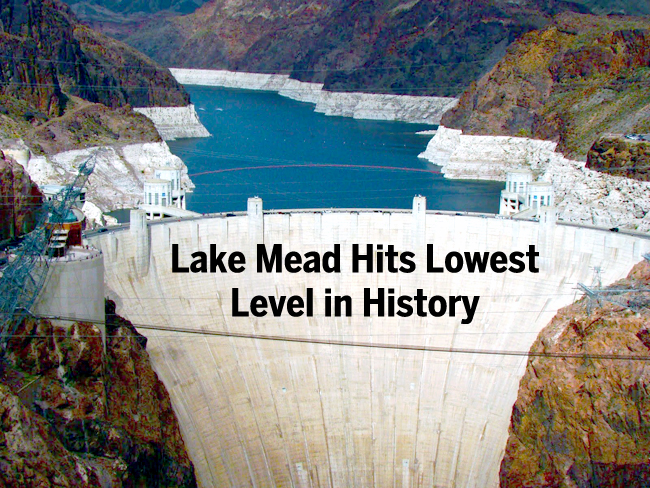
Lake Mead in May hit its lowest point in May as levels dropped below 1075 feet.
If you follow water news, you may have seen a lot of press coverage lately regarding changing drought restrictions implemented by the California State Water Resources Control Board due to the effects of El Nino rains and snow in Northern California. Here in the Imperial Valley where rain remains scarce it might be hard to imagine that El Nino had much effect at all, but apparently it did. So much so that the State Water Board on May 18 removed the drought plan that called for municipalities to cut water usage by a certain percentage and instead initiated a drought plan that makes conservation situational to each community’s water circumstances. This new plan, which will continue through January 2017, represents an easing of restrictions but it remains to be seen how local agencies will respond to this change.
What the new drought regulations do not represent is a sign that drought has gone away. It has not and we as Californians have to continue to be as vigilant as ever in protecting our water resources. Regardless of changing regulations from the state or local agencies, we all need to continue to show the same cautious use as we have when restrictions were more severe.
It’s worth noting, that Lake Mead, one of two critical reservoirs that provides Colorado River water to California, Arizona and Nevada, has reached historically low levels. In May it dropped below 1,075 feet. According to river management regulations established in 2007, when Lake Mead falls below that level it can trigger a shortage declaration on the river that would have wide-sweeping impacts, first on Arizona and Nevada, but California needs to be wary of future impacts as well. Now, the fact Lake Mead hit that low mark in May did not automatically trigger the shortage declaration. For such a declaration to be made, the projected level of Lake Mead at the beginning of the upcoming year would have to be below the 1,075 feet shortage trigger, based on August hydrology modeling. Because it is anticipated reservoir levels will rise back up over the 1,075 feet mark by the end of the year, it is unlikely that a shortage declaration will be made next year. However, what this May has shown is that drought remains very real the efforts we have all shown to conserve—efforts that have made a difference—must continue.
The point here is that everyone has a role to play to help California and don’t let news reports lead you to believe we are out of the woods. And also keep in mind that certain restrictions remain permanently in place like not using water to spray down walkways or homes, and overwatering in such a way that water runs into gutters.
In the past few months, Californians have shown a great deal of common sense when it comes to water usage and conservation. That common sense approach must continue today, tomorrow and well into the future.
